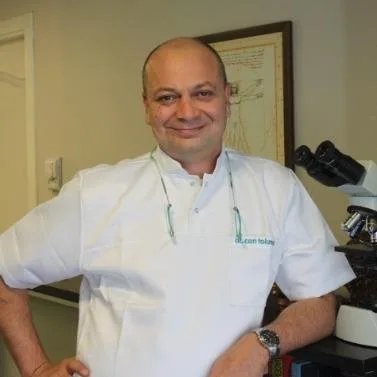Infections and inflammation of the gums and bone that surround and support the teeth are the main causes of periodontal diseases. In its early stages, it is called gingivitis, the gums may swell, get red, and even bleed. Periodontitis, its more severe variant, can cause bone loss, gum tissue separation from the tooth, and eventual tooth loss. Most cases of periodontal disease occur in adulthood. The two main dangers to dental health are periodontal disease and tooth decay.
What causes periodontal disease?
The main reason for periodontal diseases is poor dental hygiene. Success ratio of treating periodontitis and lowering your risk of developing it can both be considerably increased by brushing and flossing at least twice a day, twice a day at night, and by scheduling routine dental exams.
Bacteria in the mouth infect the gum tissue surrounding the tooth, resulting in inflammation and periodontal disease. Plaque, also known as calculus, is the result of bacteria that have been allowed to remain on the teeth for an extended period of time. The teeth become more difficult to clean when tartar accumulation spreads below the gum line. After that, only a dental health specialist can remove the tartar and halt the progression of periodontal disease.
When the soft or gingival tissue surrounding the teeth begins to be attacked by the toxins included in plaque, periodontal disease develops. A bacterial infection is brought on by this bacterium, which quickly multiplies and embeds itself in the gum. The inflammation or discomfort between the teeth and gums increases as the infection spreads deeper into the tissue. The gums appear to recede because the body’s reaction is to eradicate the diseased tissue. If no treatment is sought, the ensuing spaces between the teeth widen and the jawbone’s supporting tissue recedes, resulting in unstable teeth and tooth loss.
What Are The Symptoms Of Periodontal Disease?
Periodontal disease’s symptoms are frequently not immediately apparent, so you could not discover the condition until it has progressed significantly. This makes scheduling routine dentist appointments and always practicing perfect oral hygiene crucial. The following are some typical indications of periodontal disease to watch for:
- Red, swollen, and painful gums.
- Intense discomfort in the mouth.
- Bleeding gums when flossing and brushing.
- Receding gums
- Rooth sensitivity.
- Drifting or separate teeth.
- Visible pus between gums or teeth
- Halitosis.
Types of Periodontal Disease
Periodontal disease comes in a wide range of forms, each of which can express itself in various ways. To stop the progression and preserve the bone and gum tissue, all of these conditions require prompt treatment by a periodontist.
Here are some of the most common types of periodontal disease and the usual treatments used to treat them:
1) Gingivitis
The most common form of gingival disease (and mildest type of periodontitis) is gingivitis. It results in periodontal disease and is brought on by the poisons in plaque. Pregnant women, women taking birth control pills, people with uncontrolled diabetes, steroid users, and people who use medicine to control their seizures and blood pressure are at an increased risk of getting gingivitis.
Gingivitis is gum inflammation and usually precedes periodontitis, which is the leading cause of tooth loss in adults. For patients diagnosed with gingivitis, it is not all doom and gloom. Not all gingivitis progresses to periodontitis.
The major difference between the two is that gingivitis is reversible, while periodontitis is not.
Treatment
A good mix of at-home maintenance and expert cleaning can effectively reverse gingivitis. To clear the pockets of dirt, the dentist may do root planing and thorough scaling operations. To eliminate any leftover germs and encourage a good healing of the pockets, a combination of antibiotics and medicated mouthwashes may be employed.
According to Healthline, the results of a 2016 study showed that using a salt water rinse can be very beneficial in healing gums inflamed by gingivitis. Salt is a natural disinfectant that helps your body to heal itself.
2) Chronic Periodontal Disease
Chronic periodontal disease is the most common form of the disease, and occurs much more frequently in people over 45. Inflammation below the gum line and the gradual deterioration of the gingival and bone tissue are the characteristic of chronic periodontal disease. Although it may seem that the teeth are gradually getting longer, the gums are actually gradually receding.
Unfortunately, unlike gingivitis, chronic periodontal disease cannot be fully reversed because the supporting tissue is irreparably damaged. However, the dentist can slow the spread of the condition by combining antimicrobial therapies with scaling and root planing operations. In order to strengthen the bone and enhance the aesthetics, the periodontist may undertake surgical procedures like as pocket reduction surgery and tissue grafts.
In the beginning stages of chronic periodontitis, the disease does not have many symptoms. For most patients, the disease progresses substantially before they seek treatment from a dental professional. Common symptoms of chronic periodontitis include:
- Gum redness or bleeding when brushing the teeth, flossing or eating hard food
- Reoccurring gum swelling
- Halitosis, bad breath or a persistent metallic taste
- Gingival recession, which makes the teeth appear longer
- Formation of deep pockets between the teeth and the gums
- Teeth become loose
- Incisors begin to drift
Dental experts concur that for a successful treatment and outcome, quitting smoking and maintaining good dental hygiene are essential. Additionally, both surgical and non-surgical treatments are possible. Scaling and root planing are frequently used during initial treatments (SRP). SRP eliminates any biofilm from the periodontal pockets and mechanically cleans them.
3) Aggressive Periodontal Disease
Rapid loss of bone tissue, gum attachment, and familial aggregation are the characteristics of aggressive periodontal disease. The disease itself is very similar to chronic periodontitis, however it progresses considerably more quickly. Aggressive periodontitis has a higher risk among smokers and people with a family history of the condition.
Treatment
Patients with aggressive periodontal disease are much more likely to need surgical intervention than those with chronic periodontal disease, but both conditions can be treated. The dentist will use scaling, root planing, antibacterial, and in some cases laser techniques in an effort to preserve priceless tissue and bone, even though this version of the disease is more difficult to prevent and treat.
4) Periodontal Disease Relating to Systemic Conditions
Periodontal disease may be a sign of another illness or disorder that affects the body as a whole. The illness may behave like an aggressive form of periodontal disease, destroying tissue quickly depending on the underlying condition. The most frequent cofactors, while there are many others, include cardiovascular disease, diabetes, and respiratory disorders. Numerous illnesses exacerbate and hasten the evolution of periodontal disease, even when there is little plaque on the teeth.
Treatment
The underlying medical problem that gave rise to periodontal disease must first be under control. The dentist will utilize the same procedures for managing aggressive and chronic periodontal disease to stop the disease’s progression.
5) Necrotizing Periodontal Disease
This type of disease get worse quickly and is more common among people who smoke, have HIV, immunosuppression, malnutrition or chronic stress. The alveolar bone, gingival tissues, and periodontal ligament are frequently affected by tissue death (necrosis).
Treatment
Necrotizing periodontitis is a very rare condition. The dentist would likely speak with a doctor before beginning therapy because it could be linked to HIV or another serious medical disease. This type of disease is typically treated with scaling, root planing, antibiotic pills, medicated mouthwash, and fungicidal medications.
6) Absesses
Pus that has formed within body tissue is known as an abscess. Abscesses can show signs and symptoms include redness, discomfort, warmth, and swelling. When squeezed, the bulge could seem liquid-filled. Frequently, the redness is not limited to the swelling.
A bacterial infection causes the majority of abscesses. Your immune system sends infection-fighting white blood cells to the damaged area when bacteria enter your body. Some adjacent tissue dies when the white blood cells fight the germs, leaving a hole that later fills with pus to form an abscess.
By placing a warm compress on the affected area, you might be able to clear up an abscess. You shouldn’t try to drain or rupture an abscess at home; it might discharge naturally. It is quite easy for bacteria to spread to other parts of your skin if you attempt to squeeze the pus from an abscess on your own.
For most of these kind of abnormality or diseases like absesses, consider visiting your dentist.
Helpful Tips
You can keep your gums and teeth healthy by:
- Brushing your teeth twice a day with a fluoride toothpaste.
- Flossing regularly to remove plaque from between teeth. Or, you can use a device such as a special brush, wooden or plastic pick, or a “water flosser” recommended by a dental professional.
- Visiting the dentist routinely for a check-up and professional cleaning.
- Quitting smoking.
Prevention and home remedies
Home treatment is essential for managing plaque buildup and reducing the risk of gum disease. The American Dental Association (ADA) gives the following advice:
- Brush the teeth for 2 minutes twice daily with a soft-bristle manual or electric toothbrush.
- Use fluoride toothpaste.
- Be sure to brush all surfaces.
- Replace the toothbrush every 3 to 4 months, or more often if the bristles are matted or frayed.
When to visit a doctor
A person may develop gingivitis if their gums bleed when they clean their teeth or if they are red and swollen. They ought to check if they are practicing good dental hygiene and attempt some of the above-mentioned home remedies.
It’s crucial to contact a doctor or dentist for guidance if self-care measures don’t relieve the condition. A person should also visit their dentist or doctor right away if they develop significant gum swelling or bleeding.
Typically, a dentist may clean a person’s teeth, discuss optimal practices for at-home oral hygiene, and possibly recommend a medicated mouthwash to treat gingivitis.
Istanbul Dental Clinics Statement
Controlling the infection is the prime priority of treatment in gingival diseases. Depending on the severity of the gum disease, several treatment options and numbers will be available. Any form of treatment necessitates that the patient maintain a high standard of daily care at home. The dentist could also advise altering specific habits, like stopping smoking, to enhance the outcomes of your treatment.
At Istanbul Dental, with our qualified team we are ready to answer your additional questions, so do not hesitate to get in touch with us . Also, get a quote to start planning your dental treatment as whole process including your VIP transfer! While gathering information and inspecting the options about the dental services, we recommend you to visit our smile gallery and see our previous patients’ sincere smiles.













